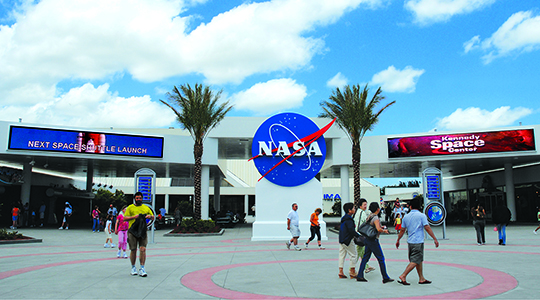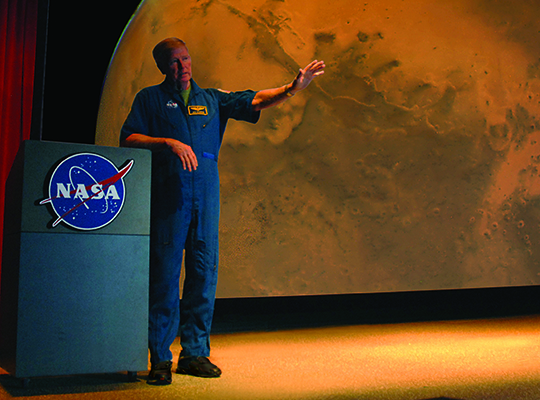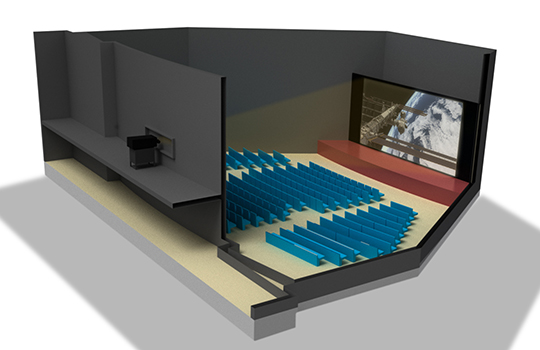Kennedy Space Center and Delaware North have joined forces with Swedish planetarium company Sciss to design and install a new Colorspace system in the center’s Astronaut Encounter Theater. With over 1.5 million visitors annually and a unique heritage in space exploration, Kennedy Space Center’s Visitor Complex will become an even more exciting place to visit. Astronauts will be guiding visitors through stunning space visualizations in 3D, all based on real scientific data gathered by telescopes and observatories around the world.

Photo credit: Kennedy Space Center Visitor Complex.
The Colorspace system will include a new larger screen and a state-of the-art 3D display using a Barco Galaxy 4K23 projector. The projector displays a 4K pixel image with a light output of 23,000 lumens, resulting in a colorful, vivid and bright 3D image.
The whole system will be powered by Sciss’s visualization software Uniview, a platform that is widely recognized in the planetarium world. Uniview will play a large role in the astronaut encounters, as it allows for interactive astronomy presentations in 3D. The astronauts and other presenters will fly through the universe, visit the surface of the Moon or Mars, explore the farthest reaches of the solar system with the New Horizons spacecraft, or simply visit the International Space Station. All the data and models are based on actual science, taking the audience on a tour to the boundaries of human exploration. This will make the Astronaut Encounter Theater a teaching venue far beyond the normal presentation environment.
This is a great example of how a planetarium software can be utilized outside a planetarium. Uniview is designed for easy delivery of high-end visual presentations where the presenter can fly freely through the universe or play films, either at a curved 360 degree projection surface or on a flat screen. It’s a flexible presentation tool that enhances learning, heighten the experience, and expands the presentation techniques. It will help the astronauts to engage the audience on a whole new level
, says Daniel Arnberg, Customer Relations Director at Sciss.

Photo credit: Kennedy Space Center Visitor Complex.
The Uniview software will also give the Astronaut Encounter Theater access to connect with other venues around the world. The feature "domecasting" is used to share data and live presentations between other scientific outreach institutions already using Uniview. It can connect the theater with a network of schools, science centers, planetariums, and other venues all over the world.
Sciss has over 150 venues all over the world using Uniview. This means that the Astronaut Encounter Theater has the potential to broadcast a presentation directly to a small planetarium at a high school in Kansas or Minnesota, or to a big dome in Berlin. It really exemplifies what a modern auditorium, dome theater or planetarium can offer its community and how it can inspire a new generation of explorers to reach for the stars
, says Daniel Arnberg.
The Astronaut Encounter Theater re-opened its doors for aspiring young astronauts and astronomers on February 15th, 2016.

An impression of the Astronaut Encounter Theater. Photo credit: Sciss.
